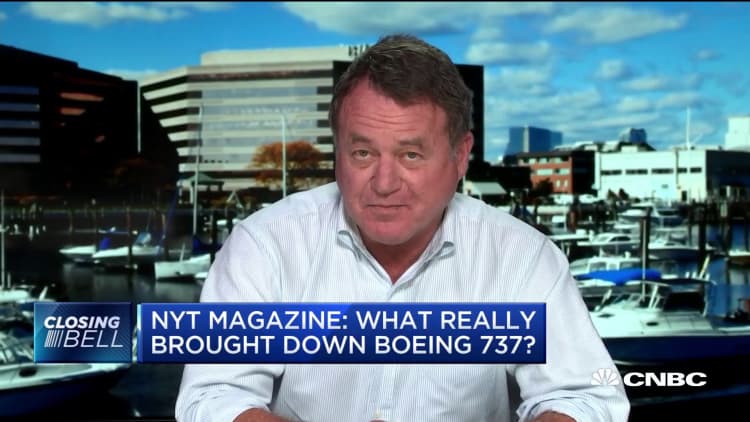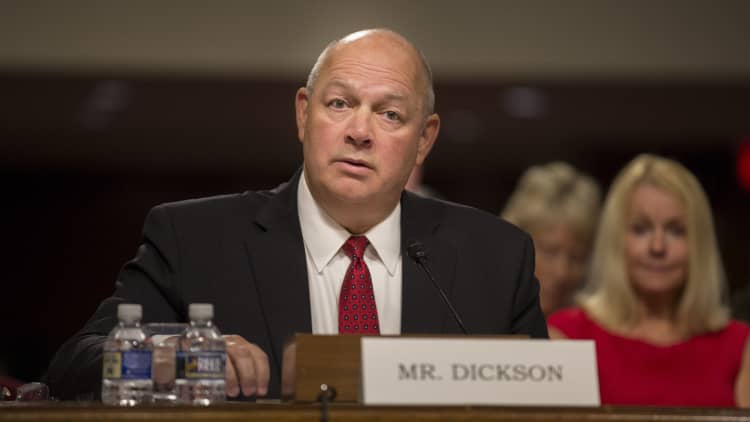Federal safety investigators on Thursday said Boeing overestimated how well pilots could handle a flurry of alerts when things go wrong on its 737 Max planes, which have been grounded since March after two fatal crashes killed a total of 346 people.
The National Transportation Safety Board issued a series of recommendations for aircraft safety assessments, including factoring in human responses when things go awry, the first formal guidelines since the crashes.
A flight-control system designed to prevent the planes from stalling misfired on both crashed flights: a Lion Air 737 Max in Indonesia last October and an Ethiopian Airlines plane of the same type in March.

"We saw in these two accidents that the crews did not react in the ways Boeing and the FAA assumed they would," said NTSB Chairman Robert Sumwalt. "Those assumptions were used in the design of the airplane and we have found a gap between the assumptions used to certify the MAX and the real-world experiences of these crews, where pilots were faced with multiple alarms and alerts at the same time."
Those multiple alerts can increase pilot workloads, the NTSB warned.
Boeing based its safety assessment of the planes, which the Federal Aviation Administration approved, on those fast response times, the NTSB says.
The agency said Boeing should be required to factor in the effect of all flight deck alerts in its safety assessment of the 737 Max, and to include design changes or pilot training and procedures to minimize potential safety risks if pilots take actions inconsistent with what Boeing expects.
Boeing and the FAA are facing several investigations into the design and certification of the jets, Boeing's best-selling aircraft ever.
"Safety is a core value for everyone at Boeing and the safety of our airplanes, our customers' passengers and crews is always our top priority," Boeing said in a statement. "We value the role of the NTSB in promoting aviation safety. We are committed to working with the FAA in reviewing the NTSB recommendations."
The FAA said it welcomed the NTSB's recommendations.
"The agency will carefully review these and all other recommendations as we continue our review of the proposed changes to the Boeing 737 MAX. The FAA is committed to a philosophy of continuous improvement," it said in a statement. "The lessons learned from the investigations into the tragic accidents of Lion Air Flight 610 and Ethiopian Airlines Flight 302 will be a springboard to an even greater level of safety."
Boeing has said it expects to submit its software fix and new pilot training materials for the 737 Max to the FAA in the coming weeks, in an effort to get the planes flying again, which it expects to do early in the fourth quarter. The manufacturer is hosting pilots from airlines including United and American to try the Max software changes in its simulator.
The FAA has said several times that it has no set timeline for allowing the planes to fly again.
Boeing shares were little changed in afternoon trading.
Boeing added the flight-control software, known as MCAS, to give the planes the feel of older 737 Max planes. Myriad computer systems are now at the center of a debate about the state of pilots' skills as aircraft become more automated and complex. Pilot training varies around the world, with some of the strictest requirements in the U.S., where pilots need to have 1,500 hours of flying before they can work for a commercial airline, unless they have military or other specialized training. Airline pilots globally need at least of 240 hours of flight time, which includes flying in a simulator, under guidelines from the United Nations aviation agency, the International Civil Aviation Organization.
At the ICAO triennial meeting in Montreal this week, the U.S. delegation is urging international regulators to examine pilot training around the world.
"At a global level, if the potential for automation dependency and degradation of manual flight operations skills is not satisfactorily addressed in existing standards, there may be a high level of variation in the approach utilized by individual States regarding how associated risks may be addressed in regulation or guidance," the U.S. delegation said in a paper it prepared for the meeting.



